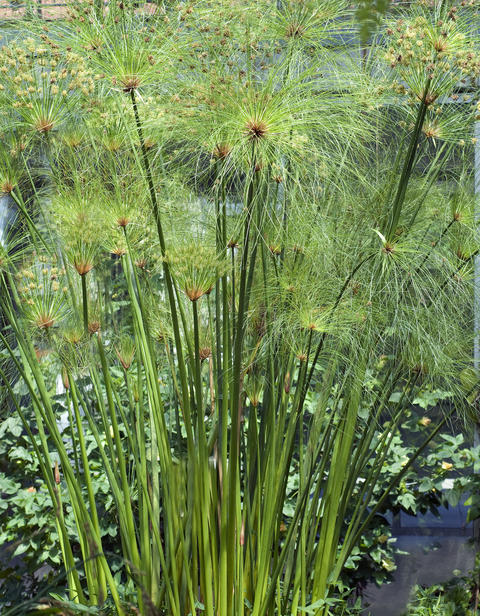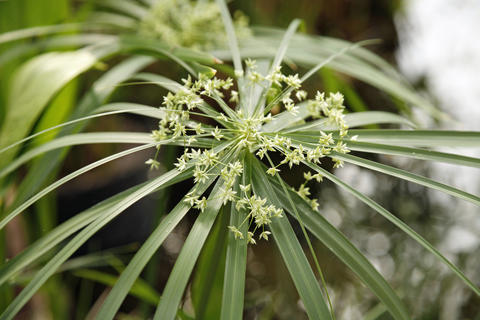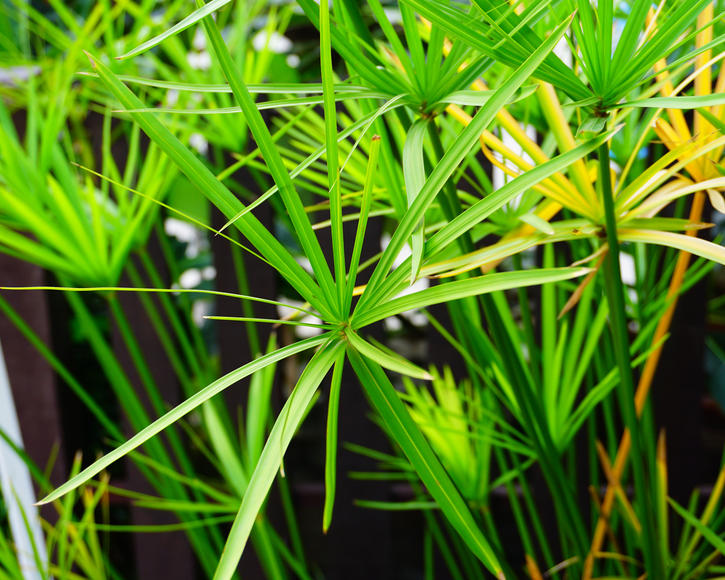Papyrus
The Papyrus plant is a species of grass that can also be kept as a houseplant. We show you the proper way to plant and care for this leading Egyptian export.
Factsheet
- Growth type
-
- rhizome
- Grass
- Growth height (from)
- from 100 cm to 400 cm
- Growth characteristics
-
- upright
- horst-forming
- Flower color
-
- white
- Flowering time (month)
-
- July to September
- Flower shape
-
- umbels
- Leaf color
-
- green
- page format
-
- tubular
- round
- narrow
- Light
-
- sunny to scattered light
- Soil type
-
- loamy
- Soil Moisture
-
- humid to wet
- Nutrient requirements
-
- nutrient-rich
- Humus
-
- rich in humus
- Decorative or utility value
-
- Leaf ornaments
- Climate zones according to USDA
-
- 9
- areas of life
-
- WR3
- WR4
- Use
-
- Interior greening
- Planters
- Pond planting
- Winter garden
- Garden style
-
- Pot garden
- Water garden
Papyrus reed or simply Papyrus (Cyperus papyrus) is a species of grass from the Cyperus genus and belongs to the Cyperaceae family. Papyrus reed is actually a marsh plant from the sub-tropics and temperate zones and is available here as a houseplant due to its decorative, delicate stems. As the name suggests, the renowned ancient Egyptian scrolls were made from the papyrus reed. To create these, the Egyptians cut the stems into thin strips that they laid neatly side by side and covered with a second layer at a 90 degree angle. The sheets of paper created in this way were pressed and dried in the sun.
The Papyrus plant normally reaches up to 13.12 feet tall when planted out and has triangular, long, narrow stems. It grows in clumps and spreads through strong rhizomes. The specimens that are available as houseplants usually remain much smaller than the grasses that are planted out and grow between 3.21 and 6.56 feet tall.

The narrow, delicate, umbrella-like leaves of the papyrus plant sit on the narrow stems. The tubular leaves are round, without leaf blades and deep green.
The plant grows new flowers from high summer into the fall that have an incomparable shine in the sunlight.
A bright, sunny location is perfect for papyrus all year round. The plant does best with high levels of humidity and warmth. Papyrus reed kept in a pot can also be happily placed outdoors from the end of May - for example in the flat water area of a garden pond (if you have one). It can also inhabit a somewhat cooler place in the house during the winter. Papyrus reed is also suitable for warm water pools.

The plant requires a nutrition, humus, and loam rich substrate and some space where it can spread itself out. The marsh grass develops best in a continuously shallow water level.
Papyrus plants require continuous watering. So they should be watered daily with plenty of lime-deficient water. They should sometimes have “wet feet”, so the plant pot saucer should be filled with a little water. The Papyrus should be sprayed regularly in heated rooms during the winter to increase the humidity. As Papyrus reed prefers a more damp to wet substrate, the substrate should never be allowed to dry out.

You can sparingly fertilize Papyrus plants with flower fertilizer every two weeks during the summer using half the recommended dosage.
As the Papyrus reed grows relatively rapidly, it can be repotted in a larger container every one to two years. The best time for this is spring. Press the root ball in firmly and water the substrate well.
It is not necessary to prune the grass. Withered and dead sections can be removed from time to time.
‘King Tut’ is a dwarf form that only grows up to 23.62 inches tall. It tolerates the shade and does not have to be standing constantly in water.
You can propagate papyrus reed through seed sowing. However, it is easier to propagate through division in the spring. Do this by removing the rootstock from the container, separate off a section and plant it in nutrient-rich substrate.
If the air is too dry, the leaf tips turn brown and spider mites may appear. Otherwise, the papyrus plant is robust.

